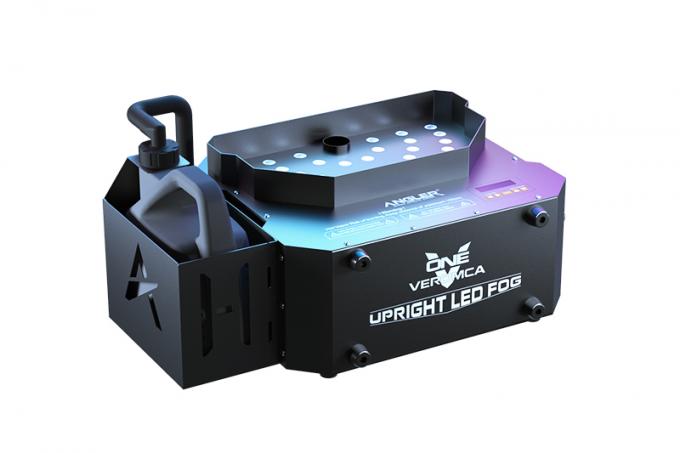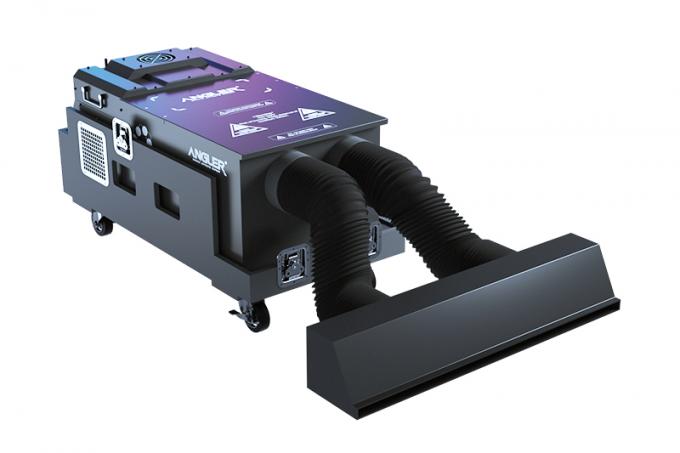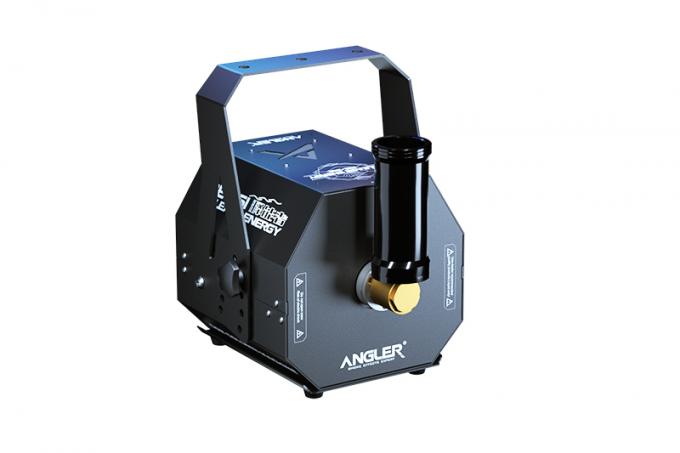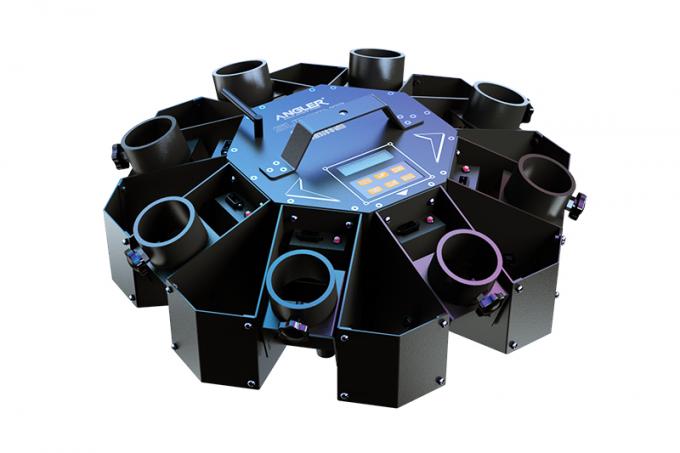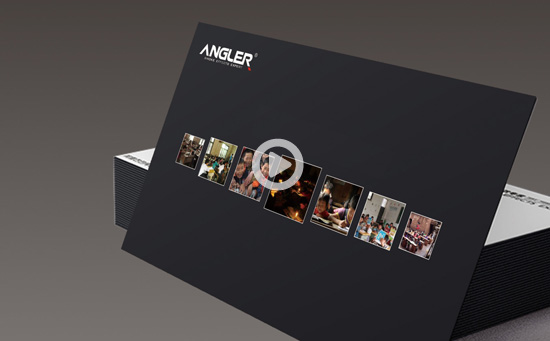Stage lighting basics Raiders
安格尔舞台设备 2019-07-09 1357
At present, many institutions, colleges, societies, enterprises, etc. have built their own halls, auditoriums, multi-purpose halls and other arts and crafts venues. They need to be equipped with some corresponding professional lighting facilities. Because of the lack of understanding of stage lighting, it is better to choose the right one. Professional lighting equipment, and many professional lighting equipment sellers, are also ignorant of professional stage lighting equipment, can not give correct guidance, resulting in waste of funds.
In order to avoid the above situation, this article makes a brief introduction to the basic common sense of stage lighting.
(1) Common light position of stage lighting To make the configuration of professional stage lights, we must first understand the common light position of stage lighting, which is an important part of the correct selection of configuration. 1. Face light: The light that is directed to the stage from the top of the audience is mainly used for the front lighting of the characters and the entire basic light. 2. Slap: Located on the outside of the mouth of the Taikou, the light obliquely cast on the stage is divided into upper and lower layers, mainly to help the surface light, enhance the facial lighting, and increase the three-dimensional sense of people and scenery. 3. Column light (also known as side light): The light projected from both sides of the platform is mainly used for the illumination of the two sides of the figure and the scene, which adds a sense of three-dimensionality and contour. 4. Top light: The light from the top of the stage to the stage is divided into a row of top light, two rows of top light, three rows of top light, etc. from front to back. It is mainly used for stage lighting, increasing stage illumination, and there are many scenes. , fixed-point illumination of props. 5. Backlighting: Light projected from the opposite direction of the stage (such as the top light, bridge light, etc.) can outline the contours of people and scenes, enhance the sense of three-dimensionality and transparency, and also serve as a specific light source. 6. Bridge light: The light that is thrown to the stage at the bridge on both sides of the stage is mainly used to assist the column light, enhance the three-dimensional sense, and also be used for the position of other light inconvenient projections. It can also be used as a specific light source. 7. Foot light: from the mouth The light projected onto the stage on the front platen mainly assists in the illumination of the surface and eliminates the shadow formed by the face and chin of the person illuminated by the high position such as the face light. 8. Heaven and Earth: The light that is cast from the sky above and below the sky to the sky is mainly used for the lighting and color changes of the sky. 9. Flowing light: It is located on the flow light stand on both sides of the stage, mainly assisting the bridge light, supplementing the light on the sides of the stage and other specific light. 10. Chasing light: The light position required from the auditorium or other positions is mainly used to track the actors performing or highlighting a certain light, and is also used for the host. It is a close-up pen of stage art and plays a role in finishing the finishing touch.
(2) Commonly used lamps and features 1. Spotlight: It is one of the most widely used main types of lighting on stage lighting. It illuminates the light, the edge of the spot is clearer, can highlight a part, and can also amplify the spot to illuminate an area. It is used as the main source of the stage, and is often used for surface light, slap, side light and other light levels. 2. Soft light: The light is soft and symmetrical, which can highlight a certain part without a blunt spot, which is convenient for several lights to connect. It is often used for close-range light positions such as column light and flowing light. 3. Backlight: It is a kind of reflective lamp, which is characterized by hard light quality, high illumination and long range. It is a kind of economical and efficient high light. 4. Astigmatism: The light is scattered, well-proportioned, and the projection area is large. It is divided into volcano and astigmatism. It is often used for skylight illumination and can also be used for general illumination of the theater podium. 5. Modeling lamp: The principle is between the chasing light and the spotlight. It is a kind of special lamp, which is mainly used for the projection of characters and scenes. 6. Foot light (also known as strip light): soft light, wide area. Mainly as a medium-view, netscape lighting, cloth color, but also in the position of the auxiliary port to illuminate the surface. 7. Light column lamp (also known as downlight): It is widely used at present. It can be used for lighting of people and scenes. It can also be installed directly on the stage, exposed to the audience, forming a light array, and doing the dual role of stage decoration and lighting. 8. Projection slides and sky effect lights: It can form an overall picture on the stage canopy, and various special effects, such as: wind, rain, thunder, electricity, water, fire, smoke, clouds and so on. 9. Computer light: This is a kind of intelligent light control controlled by DMX512 or RS232 or PMX signal. Its light color, spot and illumination are better than the above conventional lamps. It is a kind of intelligent light fixture developed rapidly in recent years, often installed in surface light. The position of the top light, the stage back step, etc., the running color, shape, figure, etc. can be programmed. Due to the different power levels, there are differences in the use on the stage. General low-power computer lights, only suitable for ballroom use. On the stage, low-power computer lighting lines and spots are often faded off by stage spotlights and backlights, so pay special attention to the selection. 10. Follow-up light: It is a stage lighting fixture. It is characterized by high brightness, lens imaging, and clear light spot. By adjusting the focal length, it can change the light spot. There is an activity light bar, which can change the color conveniently, and the lamp body can run freely. At present, there are many varieties in the market, and the method of labeling indicators is different. Power-based standards such as: 1KW halogen tungsten light source, 1KW metal halide light source, 2KW metal halide light source, etc., also have a follow-up light based on distance (in specific Distance light intensity, illuminance), such as 8-10m chasing light, 15-30m chasing light, 30-50m chasing light, 50-80 chasing light, etc., and functionally distinguish: mechanical follow spot light The focus, light bar, and color change are all done manually; the other is a computer follow-up light, whose focus, light bar, color change, and color temperature are automatically completed by pushing and pulling the electric device, so it must be selected when selecting Carefully select various indicators.
(3) The design and promotion of the stage light color changer color changer greatly simplifies the number of stage lighting, reduces the labor intensity of the lighting workers, and saves the investment amount, so it is an indispensable part of the current stage configuration. Instruments, currently there are mainly mechanical color changers and dots and color changers on the market. 1. Stage mechanical color changer: It is simple in design and low in price. It is a mainstream product in the mid-1980s and early 1990s, and is currently close to being eliminated. 2. Stage computer color changer: It is a new type of color changer developed in recent years. It adopts international standard DMX-512 signal output, which can be controlled by dedicated control, or connected to computer dimming station. The characteristics of mode, high precision, large capacity, and long control distance have become the mainstream products of the current market color changer.
(IV) Lighting Control Equipment At present, market dimmers mainly include analog dimmers and digital dimmers. 1. Analog dimmer: Using analog dimming technology, the output signal is 0-10v one-to-one output. Generally, the analog dimmer is simple in design, has fewer controller paths, and has a poor dimming curve, but the market price is low, and it is easy to learn to master. It is a mainstream product from the late 1970s to the mid-1990s. Commonly there are 3, 6, 9, 12, 120, 24, 60, 120 lights, each power is 8KW, but there are also 2KW, 4KW, etc., the number of small roads is one machine, the number of roads For the split machine. 2. Digital dimmer: Using the sound film machine technology, it is a DM512 digital signal. The digital dimming station is easy to use, and its dimming function, backup function, grouping function, dimming curve, etc. are superior to the analog dimming station, and the performance price is also reasonable. After understanding the lamp position, lamp characteristics, control equipment and color changer, you can use it according to different characteristics and size.
(5) Theater stage lighting configuration There are many kinds of stage in the theater. There are ordinary frame-style stage, there are extended stage, there is an island stage, and there is also a stage called black box. Because the stage forms are different, the configuration requirements of the lamps Not the same. Such as the ordinary frame-like stage, this stage is more in the past or in the current reconstruction and new theater, so the lighting configuration of this stage is more necessary and necessary. The stage (which refers to the frame stage) will have different requirements for the lamps due to the different repertoires. Therefore, before using the lamps, it is necessary to know what kind of repertoire is mainly performed on this stage. Clear goals and intentions. If the stage is located in a traditional opera or ballet, the configuration of the luminaire must be configured according to the requirements of the opera and ballet. For special programs such as large-scale song and dance, acrobatics, etc., in addition to the basic requirements of lighting, special lighting positions and lamps should be configured according to specific program requirements. Before configuring the luminaire, you should first understand the type and main function and use of the luminaire. Here I briefly introduce the performance of some luminaires for the luminaire configuration. 1. Spotlight: Spotlight used on the stage refers to the use of a flat convex concentrator in front of the lamp. This kind of luminaire can adjust the spot size, the beam is concentrated, and the diffused light is relatively small. The power is 0.5W to 5KW. A variety of, the focal length has a long, medium and short points, the distance of the range of sight is selected according to demand. 2. Rib light: or soft light, but in the TV festival it is called a spotlight. In the stage, the flat convex spotlight is different from the above, so the diffused area is large, and sometimes the diffuse light is used to control the diffused light to be covered in front of the mirror. The feature is that the light area is large, and it is not like a spotlight. There is a clear spot feeling, the shooting distance is relatively close, and the power is 1KW, 2KW and so on. 3. Back light: This kind of lamp has no lens in front, its brightness is brighter than spotlight, and it is used when there is strong light source and brightness on the stage. It is characterized by strong beam, but pay attention to the focus point when dimming. It is not appropriate to adjust the focus point on colored paper or curtain, which is easy to cause burning. In addition, when dimming, the center often has black heart, in order to avoid black heart, in the light The front center is provided with an annular baffle, which emits a large spot of light that is not easily collapsed. Now a new type of coating on the reflective bowl to transmit the line outside the line to reduce the temperature in front of the lamp, the effect is very good, the name is cold light super spotlight, the actual structure of the lamp is the same as the back light. 4. Imaging light: or shaped light, ellipsoid spotlight. There are a variety of beam angles that can be selected according to needs. The main features are such that the slides can cut the spot into square, diamond, triangle and other shapes, or project various patterns. 5. Downlight: It is called PAR lamp and beam lamp. Its structure is to install mirror light bulb in the cylinder. The main characteristic is to emit a relatively fixed beam. The beam angle is wide and wide, and the spot size cannot be adjusted. 6. Daylighting lamp: A high-power astigmatism lamp used to illuminate the skylight from top to bottom. It requires light and balance, and the irradiation area is large. 7. Floor lamp: High-power astigmatism lamp, used to place on the stage surface, the lower part of the skylight is illuminated upwards, and the light irradiated by the sky row lamp is connected, and the upper and lower sides are even. 8. astigmatism strip light: long strip shape, divided into multiple grids, generally can be divided into three or four colors, each grid with incandescent bulb power of about 200W, requiring various colors to self-align, for large-area illumination curtain or curtain It can also be used as a large-area balanced lighting. Various colors of light can also be used at the same time to call out different colored beams. 9. General astigmatism lamps: such as iodine-tungsten lamps and ordinary floodlights, mainly to uniformly illuminate an area, or some set of scenery. The luminaires introduced above are the basic luminaires used in the general stage, but other types of luminaires should be configured due to the different forms of the performance. For example, in addition to the basic lighting, the singing and dancing party uses a large number of various lighting fixtures such as downlights, computer lights, hose lights, etc., and even configures smokers, dry ice machines, strobe lights, lasers and projection slides, as well as supporting use. For light projection, to reduce light source spots, special seamless plastic and so on.
Next : Stage lighting design principles and settings
Previous : Zhang Yongjia talks about five major trends Interpretation of sound and light industry opportunities
More information :
Stage lighting design principles and settings (2019-07-09)
Zhang Yongjia talks about five major trends Interpretation of sound and light industry opportunities (2019-07-09)
Analysis of the development of LED stage lights in 2013 (2019-07-09)


